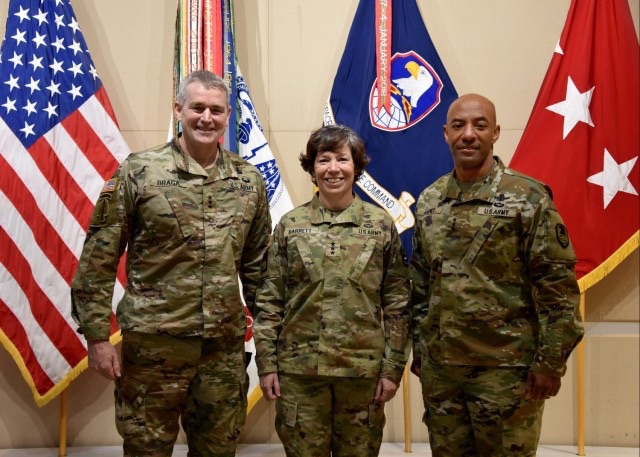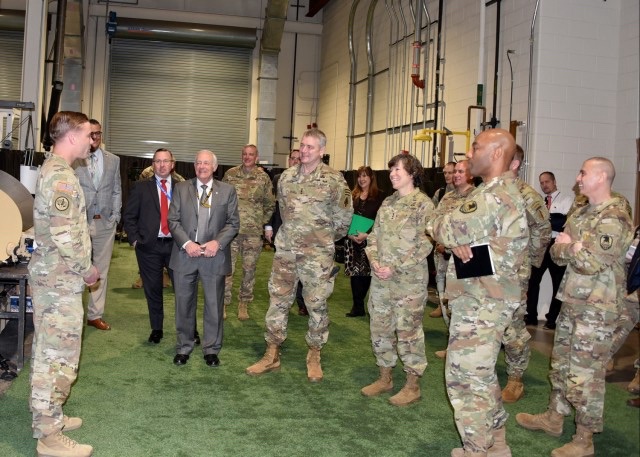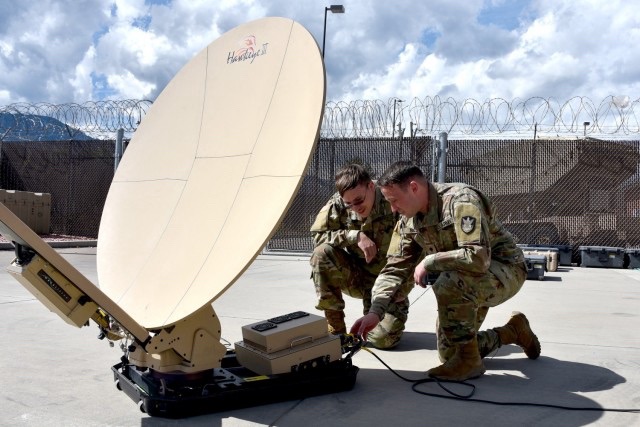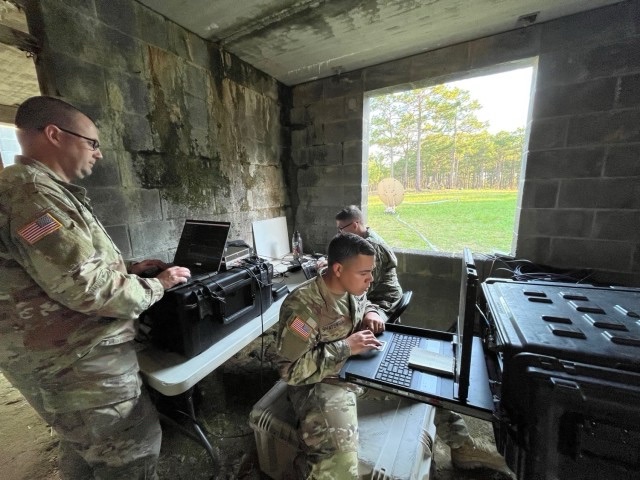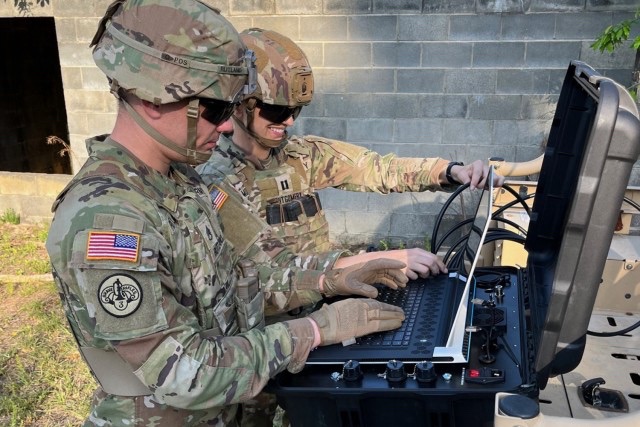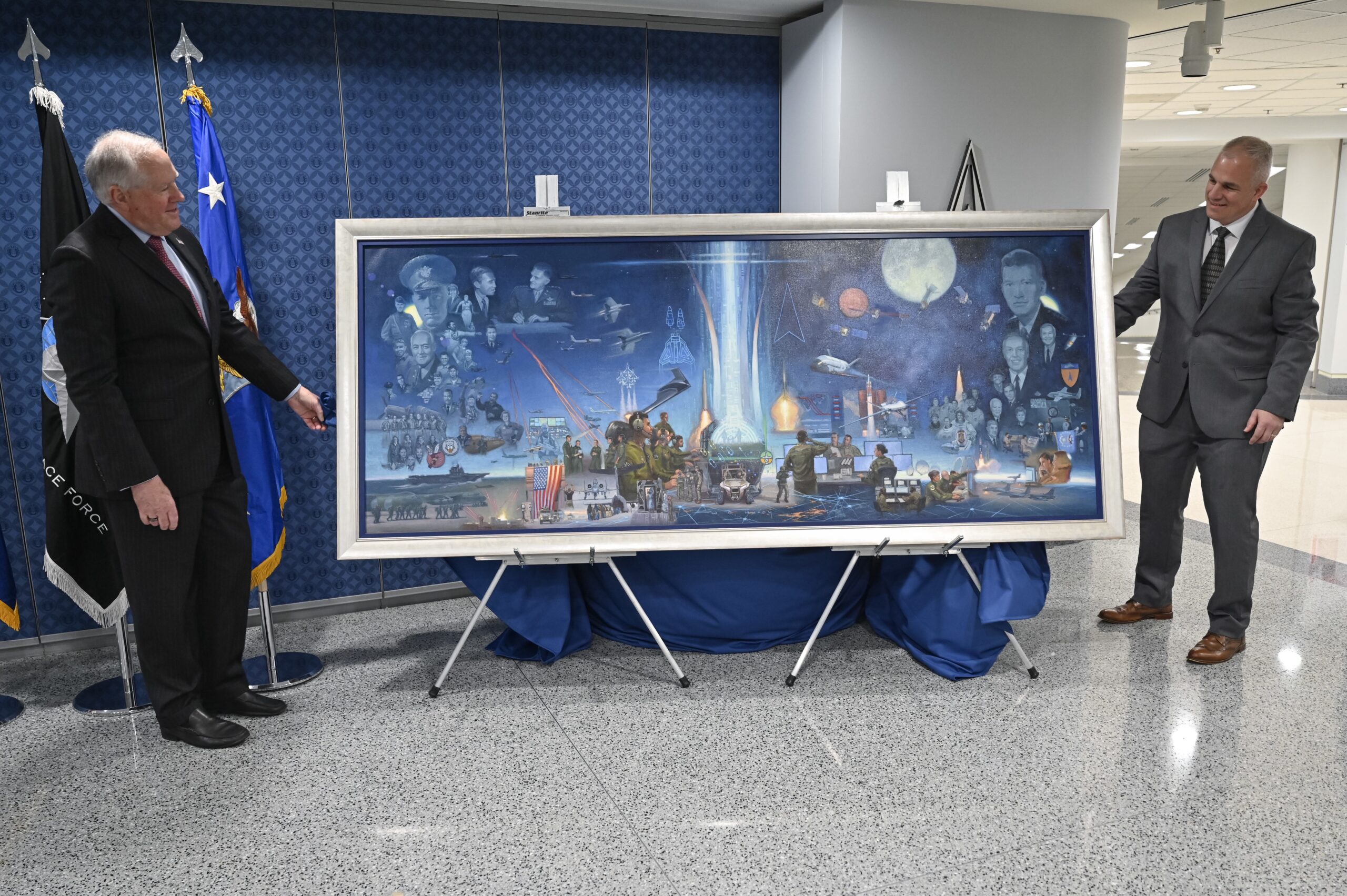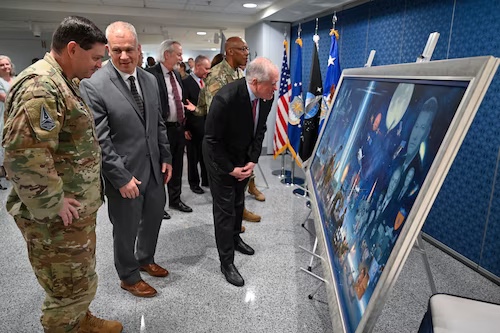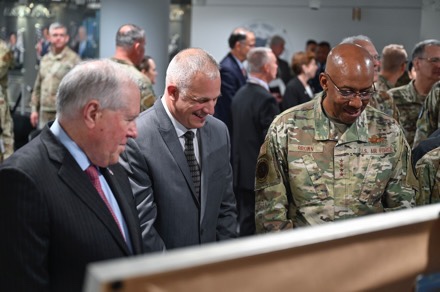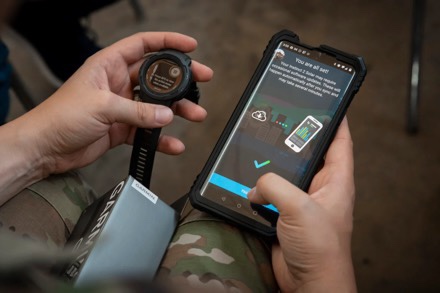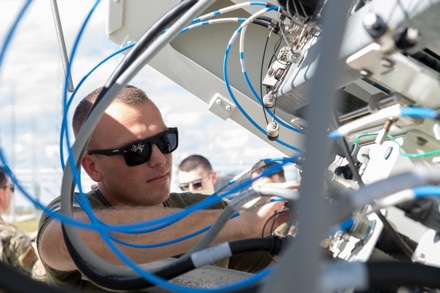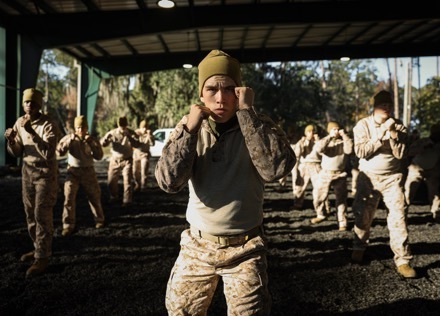
CAMP KINSER, Japan —
At 3:15 a.m., U.S. Space Force Capt. Peter Simon turns off his alarm, quickly checks his emails, puts on his uniform and heads to his car.
What’s different about his uniform compared to those of his fellow Guardians from the 161st Electromagnetic Warfare Combat Detachment, a unit within Space Delta 3 – Space Electromagnetic Warfare, is that his uniform doesn’t contain any nametape. No last name on the right side of his chest. No “U.S. SPACE FORCE” written in all blue letters. Nothing that would clearly distinguish his name, rank, or military branch from another Space Force Guardian.
But, in a group of 50 Marines, Simon stands out. Surrounded by Marines who are also nameless and rankless, it’s the difference in camouflage pattern, and perhaps the 10-year age difference, that clearly distinguishes Simon from the pack.
Simon, detachment commander of the 161st EWCD, and Staff Sgt. Clifton Trujillo, an Air Force reservist and expeditionary cyber lead for 161st EWCD, are deployed to Camp Kinser, Japan, with the intent of developing a larger Space Force presence on the primarily Marine Corps base.
While deployed, both Simon and Trujillo serve 12-hour shifts Monday through Friday but remain “on call at a moment’s notice” during the weekends. Despite the long shift, both Guardians have signed up to participate in the Marine Corps Martial Arts Program.
Delivered in various stages, the MCMAP functions as a combat system developed by the United States Marine Corps to combine existing and new hand-to-hand and close quarters combat techniques with morale and team-building functions as well as instruction in the Warrior Ethos.
Serving as a foundational pillar for the USMC, the MCMAP is comprised of learning armed and unarmed combative techniques while also forging mental and physical toughness amongst the ranks.
Like many martial arts disciplines, a servicemember’s qualifications are demonstrated by the color of belt he or she receives. The levels of qualification include tan, gray, green, brown and black; tan representing the earliest qualification and black representing the most senior level of proficiency a Marine can achieve.
“The program is so ingrained into USMC culture that it may become a barrier to promotion if a member doesn’t achieve a certain level by the time they are eligible for promotion,” explained Simon.
Simon first heard of the program from his brother-in-law, a former Marine who had spoken highly of the program.
“He described what the course was about and some of the drills they did, which made me want to get involved,” said Simon. “I reached out to the course instructor when I got settled at Camp Kinser and he agreed to include two Guardians in the course.”
From there, five days a week for three weeks, Simon and Trujillo woke up well before the sun or their fellow Guardians would rise, perfecting combative techniques and conquering various obstacle courses, only to then shower and make it to work on time for their 6 a.m. roll call.
“We would finish the day absolutely exhausted, said Trujillo. “Everything hurt for those entire three weeks.”
Despite the early mornings and the course’s physical toll, compounded by an already demanding deployment schedule, Simon and Trujillo stuck it out to the course’s culminating event: a four-hour test of participants’ physical and mental resilience.
“Through it all, I learned I’m a lot more resilient than I thought I was,” said Trujillo. “I’m more than 20 years older than most of the Marines in the course. To be able to keep up with them and see the course to its end was a great feeling.”
Upon completing the course, both Guardians received tan belts, symbolizing their level of proficiency in the MCMAP.
“It doesn’t look too different from the belts we wear every day in the Space Force,” admitted Simon. “Most people probably wouldn’t know the difference, but I’ll still wear it proudly.”
As for what’s next, Simon says he wants to continue working his way up the MCMAP ladder, eventually earning the highest level of proficiency: the black belt.
“The Space Force values unique experiences like this because it allows Guardians to approach problems differently and communicate more effectively across the Joint Force,” said Simon. “If I can continue to find programs such as the MCMAP, I can not only better myself, but create opportunities for the next generation of Guardians that I wish I had when I first joined the military.”
By Emily Peacock


